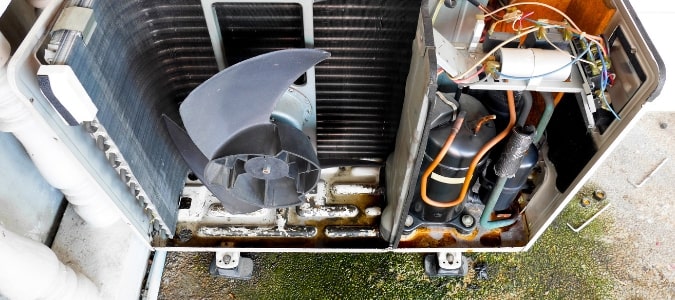It’s a nightmare when it’s the hottest part of summer and you’re dealing with your AC compressor not turning on. Your home starts heating up; the kids are getting grumpy; you’re handing out glasses of cold lemonade as fast as you can; etc. etc.,
![]()
What Does an AC Compressor Do?
A compressor is a vital part of an air conditioning system—the rest of the system can’t function without it! To put it simply, the AC compressor works to move refrigerant through the appliance. As the compressor moves refrigerant, it compresses (hence the name) the cold gas until it becomes hot and pressurized. The heat is then transferred outside, which cools your home in the process.
Troubleshooting AC Compressor Issues
Capacitors
In many cases, compressor problems are caused by faulty or broken capacitors. If the tech determines that the capacitor is to blame, he may swap it out for a hard-start capacitor, which may resolve the issue once and for all. The only way to troubleshoot a capacitor is by replacing it and testing the unit, so this is commonly done when an AC compressor won’t turn on.

Check for refrigerant leaks
Think of refrigerant and the compressor as best friends who can’t function without one another. The compressor works in conjunction with refrigerant to cool while simultaneously removing heat. When the refrigerant levels drop too low due to a leak or other issue, the compressor won’t start. This is an easy issue to troubleshoot though—simply locate the refrigerant gauge and check to see if it’s at the recommended level. If you find the levels are low, contact a professional to address the problem.
Terminal Connections
The tech will also check the terminal connections to ensure that everything is tight and in place. A loose connection can cause some pretty significant problems. If your compressor works sporadically, it could be something as simple as this. There is also a chance that the terminal connections are just really dirty. A good cleaning may do the trick.
Check the valves
If the compressor won’t start, it could be a valve issue. The refrigerant is transported through a series of valves that can break over time. If a valve is broken, the refrigerant won’t be turned into a gas before it reaches the compressor inlet. Luckily, broken valves are an easy fix and replacing them typically resolves the issue.


